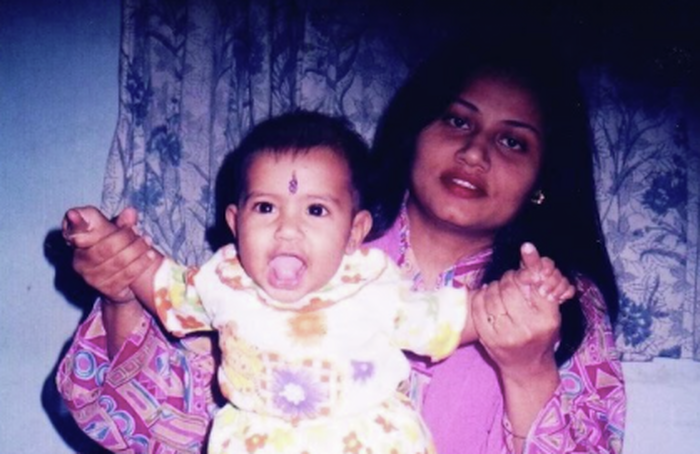Crisis of Signs: Fashionable Expression in the Walls of the Home
Lily Maguire takes a look back at Europe’s past to understand the ongoing power of fashion to construct identity.
In 18th century Europe, the emergence of a public sphere triggered a crisis of visual status signs. Fashion shifted from careful control by the monarch to the untameable boutiques and streets of Paris and London. Fashionable display moved outside the perimeters of court to the public sphere, where anybody could mimic ostentatious dress through artificial stones and cheap fabrics. The ability of the aristocracy to shine was undermined by fashionable influences valiantly visible in public settings, rejecting rigid regulations of dress according to status. In the face of a national lockdown, we see the 18th century crisis of signs inverted as hyper-visible fashion in the public sphere has retreated into the walls of the home. Alike to the artificial luxury of the 1700s deceptively displaying status, we face the artificiality of social media filtering fashion in lockdown.
“what is the power of fashion in constructing identity when nobody sees it?”
This poses the question: what is the power of fashion in constructing identity when nobody sees it? Have we ‘arrived at the point where luxury resides only in taste and comfort’ (Voltaire, 1751) or does fashion still compose the Self when performative display is lost? Miuccia Prada claimed: ‘what you wear is how you present yourself to the world’. However, like the 18th century, when fashion challenged hierarchies, this new crisis holds opportunities to leave behind external examination of fashionable expression. We mustn’t reject the power of dress but explore clothing in the home as a prosthetic extension of identity, negotiating a sense of Self freed from the critique of onlookers.
Before 1715, courtly consumption of fashion emanated from one centre, the monarch, conveying visual signs of fixed positions in hierarchies. In the French court of Louis XIV, sumptuary laws dictated colours and materials worn by different social orders within the controlled perimeters of aristocratic homes and court palaces. Yet a crisis of signs dawned as trade shifted to pluralistic control in a thriving commercial economy, producing and displaying semi-luxury goods. The ‘representation’ function of fashion broke down and sparked the Crisis of Signs, as anybody could mimic ornate court dress, competing as arbiters of fashion in public places.
During the Diamond Necklace Affair of 1784-85, the infamous Jeanne de Valois-Saint Rémy got hold of a necklace worth 1,600,000 livres by convincing the powerful Cardinal de Rohan it was for Queen Marie-Antoinette of France. In a striking example of disintegrated visual status signs, Jeanne allegedly lured the Cardinal into the Grove of Venus in the gardens of Versailles to meet ‘Marie Antoinette’ – the prostitute Nicole Leguay d’Oliva who replicated the fashions and likeness of the Queen. Today, rather than being pulled into the public sphere where fashionable insincerity lies, the visibility of fashion has eroded. We are instead lured into the 21st century Grove of Venus: social media. From Khloe Kardashian’s online reincarnation as her photoshopped avatar, to 15 second TikToks depicting perfect processions of fashion ‘icons’, digitally manipulated imagery deceives us about the reality of lockdown fashion.
“Lockdown is the chance to escape the strait jacket of public-sphere camera culture where continuous analysis of clothing restricts individual expression.”
Despite this, we must avoid the paradox between claiming fashion is stripped of its identity-forming function, and the reality of dress facilitating individuality – even in lockdown. Discourse during the 18th century Crisis of Signs asserted that fashion no longer signalled social power, as its accelerated visibility made it status neutral. Fashions transformed from ‘Rococo’ style Court dress – tiers of ruffles, excesses of silks, ridiculously adorned hairstyles – to ‘naturalised’ classical styles based upon white muslin, flowing fabrics and straw hats. In the pandemic, there is a temptation to claim fashion does not contribute to identity-construction, as few people witness our dress, and many have opted for ‘natural’ outfits providing comfort. Yet alike to the 18th century where naturalised styles conducted powerful performances of ideology, the significance of fashion remains unalterable even in lockdown.
The adoption of classical styles in the 18th century announced a person’s autonomy from the excesses of traditional regimes, and their allegiance to the Enlightenment’s glorification of classical Greco-Roman ideals. In 1751, the Genevan philosopher Rousseau was confined to the home by grave illness. He declared from then, he would abandon fashionable society, favouring natural styles: ‘I left le monde and its pomp. I renounced all finery’ (1752). Nobody could witness his reversion to simplified fashions inspired by the human form, just as nobody sees the reality of our fashion in lockdown. Nevertheless, it still remained a powerful, individual abandonment of hyper-scrutinised fashions which resonates today.
Lockdown is the chance to escape the straitjacket of public-sphere camera culture where continuous analysis of clothing restricts individual expression. Online filtering of fashionable expression can be replaced by offline exploration of our multi-layered identities through clothing. During the 21st century Crisis of Signs, we cannot abandon fashion as a mechanism of character building. Taking inspiration from the past, we must become postmodern role players, using fashion to negotiate between unregulated versions of the Self.
 Comment / Plastic pubs: the problem with Cambridge alehouses 5 January 2026
Comment / Plastic pubs: the problem with Cambridge alehouses 5 January 2026 News / Cambridge academics stand out in King’s 2026 Honours List2 January 2026
News / Cambridge academics stand out in King’s 2026 Honours List2 January 2026 News / Cambridge businesses concerned infrastructure delays will hurt growth5 January 2026
News / Cambridge businesses concerned infrastructure delays will hurt growth5 January 2026 News / AstraZeneca sues for £32 million over faulty construction at Cambridge Campus31 December 2025
News / AstraZeneca sues for £32 million over faulty construction at Cambridge Campus31 December 2025 Interviews / You don’t need to peak at Cambridge, says Robin Harding31 December 2025
Interviews / You don’t need to peak at Cambridge, says Robin Harding31 December 2025









